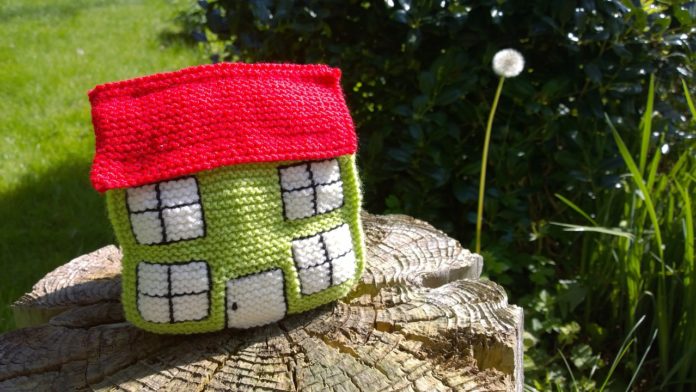Buying a home is both exciting and nerve-racking, as anyone who has been there can attest. Unless you’re having your home custom-built and professionally landscaped, chances are you’ll be eager to make some changes as soon as you move in.
But not so fast, say about a dozen Northeast Ohio homeowners. Folks moving into a home should take their time and think projects through before knocking down walls or making other major changes that they might later regret. We asked these homeowners to share what they did wrong and right when they moved into their homes. Via email and snail mail, here is their collective wisdom.
• When you move into a new home, it’s a good idea to wait and see what comes up in the yard for at least a whole growing season. Take notes on when trees, shrubs and plants start to grow, bloom and go to seed. Ask the neighbors if they are familiar with what may be planted in the yard. Get help from other gardening friends to help identify plants you aren’t familiar with.
If you decide not to keep the garden and just want to plant a lawn, contact a local garden club to see if they may want to dig up any plants. They will most likely find a good home for them. — Barb Rauckhorst, 51, North Royalton, Cuyahoga County master gardener
• First, develop a budget. Second, make your home safe with a carbon monoxide detector, smoke detectors and a kitchen fire extinguisher. Third, make necessary infrastructure repairs to ensure the functionality of your home. Fourth, concentrate on making your new home more livable. Once you have done the previous, and if your are lucky enough to still have money left over, then it’s time to redecorate. Finally, learn basic trade skills such as electrical and plumbing through classes or self-help books. It can save you a bunch in the long run. — Paul Lorenz, 50, Parma
• Don’t go into a lot of debt buying new furniture to show off. Take your time. Always have an emergency pot of money in case something comes up like job layoffs, divorces, sickness not covered by insurance, unexpected deaths in the family, lawsuits, automobile accidents, unexpected pregnancies and unforeseen repairs not covered by homeowners insurance. — Carolyn Tyson, 69, Solon
• The single most important thing the new owner of a new or existing property can do before making changes [in the landscape] or additions is to have the soil tested. One of the most important functions of the soil is to provide nutrients to the root systems of plants to support their growth for development. Ohio State University utilizes the University of Massachusetts soil testing laboratory. Owners can get soil test information and instructions at soiltest.umass.edu/ordering-information. — Elaine C. Wolan, 67, Westlake, Cuyahoga county master gardener
• Before any major remodeling, live in the house long enough to understand how the room traffic flows and how you will use the areas. First address work that will prevent more expenses down the line; i.e. replace that roof before any leaks and expensive repairs occur.
If you plan to stay in the house a long time and you have a very old house with old wiring and without insulation, consult multiple contractors (insulation, windows, electrical, etc.) very early in your ownership to determine what work will offer you the most savings and comfort over time. — Sharon Mathie, 54, Cleveland Heights
• Buy a fireproof safety box for all important papers: deed, appliance receipts, remodeling and repair receipts, etc. Also, purchase a notebook and list and date all purchases: appliances, furniture, carpeting, home improvements, storm doors, lawnmowers, etc. It’s an easy reference to check back on when an appliance dies and you wonder about its life span. List warranty items and length of warranty. I started our notebook in 1971. It’s fun to see the prices we paid! — Ellen Hoelter, 64, North Olmsted
• Check the trees on the property. Invasive roots of trees planted too close to structures can damage foundations and underground pipes. Trees are capable of lifting and cracking sidewalks and driveways. When we first moved in, a huge pine tree near the corner of our house had to be cut down, which proved costly.
Also, when planting new trees in the yard, be sure to envision them at maturity. A small sapling might look perfect in a particular spot, but years later may outgrow the area. — Linda Evers, Garfield Heights
• I bought a neglected fixer-upper that turned out to be a perfect choice. It needed cleaning, wallpaper stripping, painting and just general home repair. My tips would be allow yourself time. Spread those out so you don’t run short of money. Take advantage of utility rebates, especially appliances, hot water tank and furnace improvements. Be patient and prioritize your improvements. It takes time and it’s worth it. — Dennis Simecek, 62, Twinsburg
• Find out what city services are offered in your community. Ask your real estate professional or call the local city hall service department. The first autumn leaf raking adventure for my husband and I, 35 years ago, included approximately 70 bags of leaves put on the tree lawn for garbage pickup. We had no idea you could just rake the leaves to the curb and the city came around with a giant vacuum leaf-vacuum truck for residents. Some kindly neighbor took pity on us and finally told us.
Another thing we have is an abundance of wildlife such as possums, skunks and raccoons, etc. Our city provides traps for these nuisance animals free of charge. — Linda Elk, 59, Middleburg Heights
• For ease of housekeeping, I recommend the following: No clear shower doors. Choose a grout color darker than that of the ceramic tile. Avoid a flat cooktop because it means constant upkeep and unsatisfactory cooking. And with baseboards, avoid a horizontal plane on top, to eliminate dusting. — Jeane P. Kroecker, retired, Olmsted Falls
• After moving into your first new home, assess your space and your existing pieces you are bringing with you and keeping before purchasing furniture. Make a plan. Purchase the best furniture you can afford within your spending plan, even if it means purchasing fewer pieces than what you need at the time. The furniture will last a long time and if you really love it when you buy it you’ll always really love it! Make a plan for your furnishings and home and garden needs based on priorities and your spending plan and stick to it. You’ll be glad you did. — Karen Cannon, 66, of Design Interiors by Karen in Strongsville








